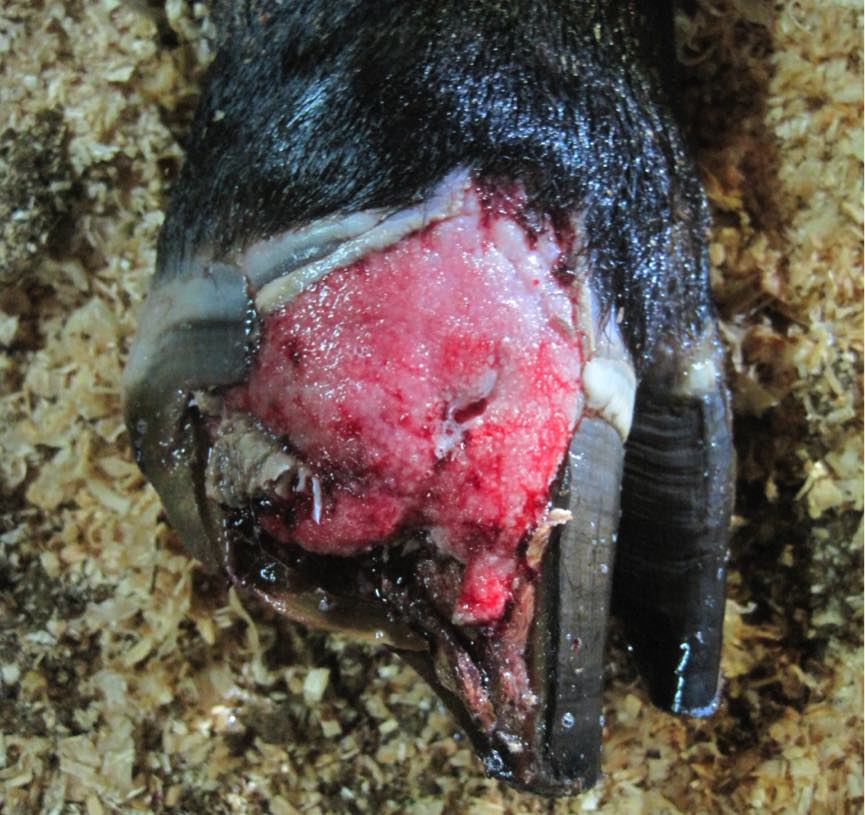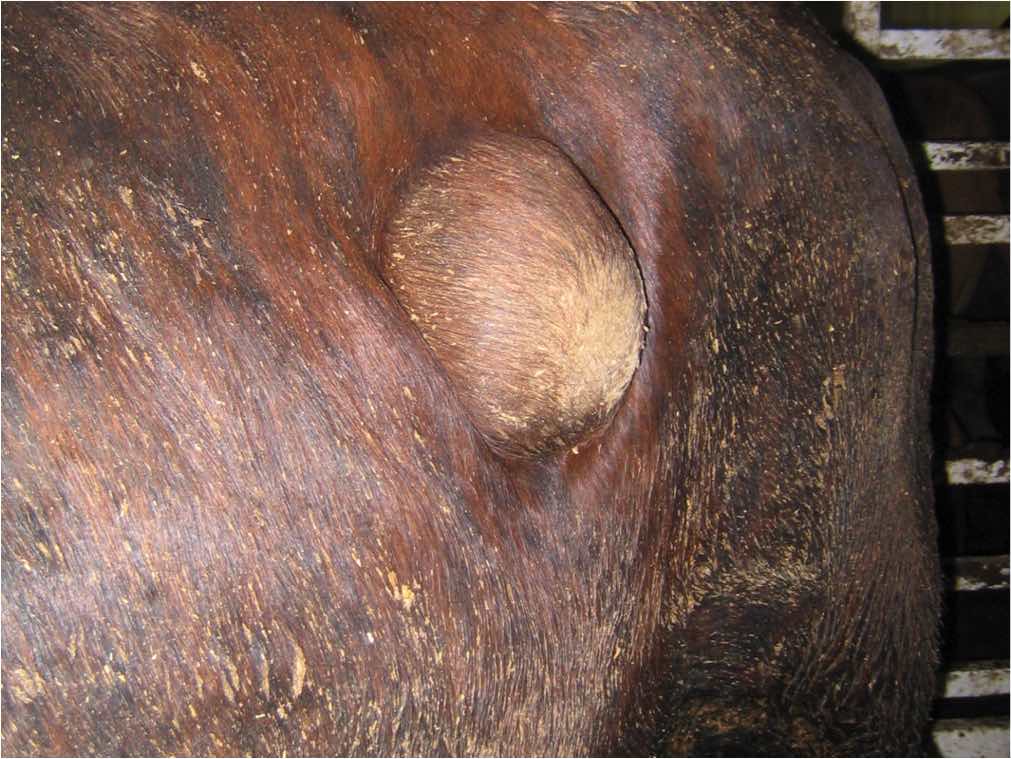Live Animal Export: Reject the rejects

How come so many animals that clearly do not meet the rules are still being herded on ships and transported? Dr Lynn Simpson investigates.
Why do we have animal deaths during sea transportation? Some are due to inherent shipping risks such as fires, mechanical failures, design flaws and unfortunately sometimes, capsizing. Some are due to environmental factors such as heavy seas and heat stress events. Many of these factors are unforeseen or unavoidable.
But what is avoidable, and entirely unacceptable is allowing animals that fail to meet the Australian standards to board an export ship. There are clear rejection criteria. They are often ignored.
Many of the deaths I have had to deal with on ships at sea are directly attributable to failure of veterinary inspection before loading. It makes me outraged.
Inspecting huge numbers of animals in a short time frame as they head to the ships ramp is no easy task, I’ve done it myself. Sometimes it’s dark, sometimes it’s pouring with rain. Most inspection is based on disease and welfare identification; hence trained veterinarians usually do it. But that’s not always the case, non-vets can be inspectors too.
Is this a problem? Do non-vets have the training to be effective? Some are very good, however; it’s not ideal in my opinion. More problematic to me is the fact that there is often a conflict of interest with the inspecting veterinarians. These vets who are responsible for the final animal health inspection, often as the animal is about to step on the ship’s ramp and into her belly. Once loaded they are unable to be unloaded again due to quarantine regulations. Once on, it stays on, until unloaded overseas or into the sea.
These vets are not the ones who sail on the ships, they are generally land-based. They do not have to contend with any diseased or injured animals they allow to board, they go home at the end of loading and the poor schmuck shipboard vet gets to deal with it. On many occasions I have literally gone toe to toe with land based vets and inspectors about allowing ‘reject’ animals onto the ships. Spit has been exchanged face to face in heated discussions.
However, they are often the same vets engaged by the exporters to prepare the animals for export, prior to final inspection. Hence these vets have often had much access to these animals and multiple lower stress environments in which to inspect and reject suspect diseased or injured animals more thoroughly.
I removed an eye from a bull one voyage that was weirdly damaged, he couldn’t close it, it was dried out. Once I sedated him for a closer look it appeared that one side of his entire body had been exposed to and suffered burns from radiant heat, likely from bush fires we had had in the preceding months. He had been loaded onto a truck and then a ship. He should have been put out of his misery, his eye was burnt open!
Rejection criteria involve both infectious and non-infectious diseases.
Noninfectious diseases include, but are not limited to; shy-feeders, contracted tendons, lameness’s, broken legs, scrotal hernias, tumors, abscesses.

Infectious diseases include, but are not limited to;
Salmonellosis, a highly contagious disease where animals slowly dehydrate to death by fluid loss from diarrhea.
Pneumonia, where their lungs become diseased and dysfunctional and oxygen unavailable to the body regardless of how good the ventilation system may be and they slowly die of lack of oxygen in their bloodstreams.
‘Pinkeye,’ that can result in pain and blindness and is especially well spread on board a crowded environment such as a ship .
‘Ringworm,’ which is contagious to humans, itchy as hell and very transmissible.
Scabby mouth. Lets not forget boring old scabby mouth which, whilst not a fatal disease has seen several large shipments of Australian livestock rejected in overseas ports and all animals on board suffer terribly by extended voyages.
Or, in the worst known scenario when they were on-exported to Pakistan and brutally killed due to controversy surrounding their disease status.
Scabby mouth doesn’t kill sheep directly, but it is a disease that is carefully monitored for, onboard. Any animal with an easily visible case of it is usually killed by the shipboard vet or stockman to protect the consignment from potential rejection.
Keep in mind. Ships may cause non-infectious diseases through injury, but no ship has the potential to transmit an infectious disease unless that disease is introduced to the ship from an infected animal or if the cleaning of the vessel has not been up to biosecurity standards on the return voyage when the ship is empty of stock. Either scenario is a concern, and indicates a failure of process.
Disease is somehow being let onto the ships at some time, and or, is not being removed during the cleaning process. This is of particular concern if a ship has come from a country that has diseases such as foot and mouth that Australia does not have, and would be a travesty to all of agriculture Australia if it were to be found in Australia.
Its one of the reasons we have such strict quarantine requirements.
One of the most simple rejection criteria is wool length. Maximum of 2.5 cm of wool or no sailing. I’d like someone to explain how this animal below and many like him get onto a ship?

Animals with visible lumps such as “coconut head” at the top of the article, or this animal with a massive flank abscess have failed to be rejected.

The Australian legislation says we are not to be carrying animals with such ailments. So during the voyage the shipboard vet must either hide the animal upon inspection in the discharging port if it’s not infectious or conduct surgery at sea to correct the visual problem in a non-ideal surgical environment.
Or, kill the animal and throw it in the sea so its presence and the Australian inspection failure is not visible. This is done to ensure Australia’s reliability and credibility is not questioned by importing authorities.
It’s a travesty having to shoot a perfectly healthy animal because it has a transient fungal skin disease such as ringworm, but I’ve had to. Even after pleading with the authorities about how innocuous and ubiquitous the condition is. Although, knowing what I now know about some overseas slaughter standards the animals were probably lucky my argument was lost.

One reject that still pisses me off was a poor little bull who we discovered after the first wash had hay bale string caught around his foot. It had obviously been there since he was a baby as the skin and flesh was trying to grow around it much like if you see a tree trunk with wire or some such left in it as a sapling. The bull was in agony every time he put his foot down. We, sedated him, cleaned the foot, removed the ingrown string and he was a different animal afterwards. Yet this occurred in the middle of the Indian Ocean.
His predicament had been missed by the farmer, then at least two truck drivers, the feedlot staff, the preparation (protocol) vets and in the final inspection. Our inspection systems are inadequate and inherently flawed.
His suffering was discovered and addressed in the middle of the ocean instead.
What a disgrace! The ship’s crew were the only ones who didn’t fail him.
If we can’t follow the rules, we shouldn’t play.
For Lynn’s full archive of shocking exposés into the livestock trades, click here.
